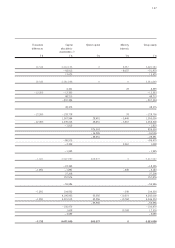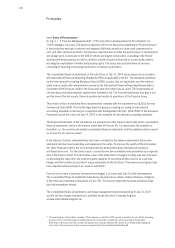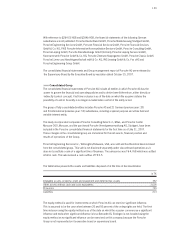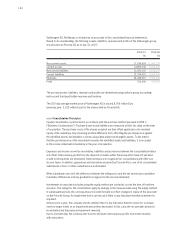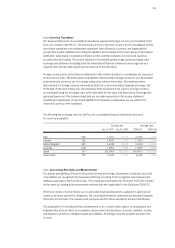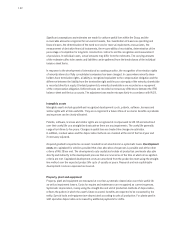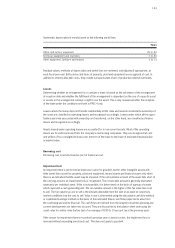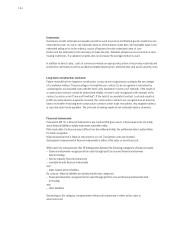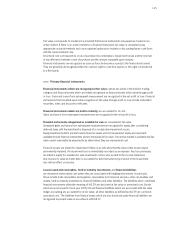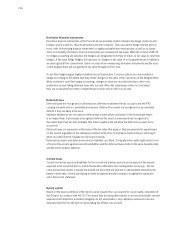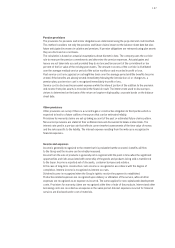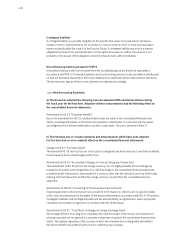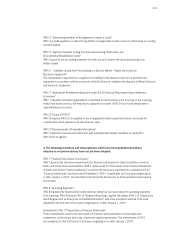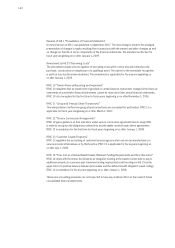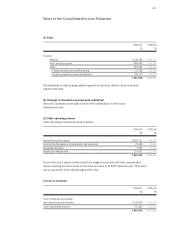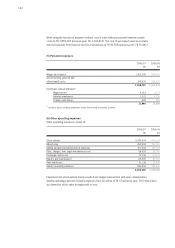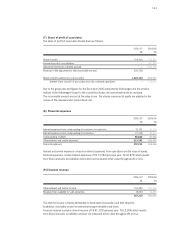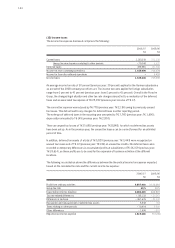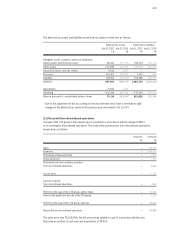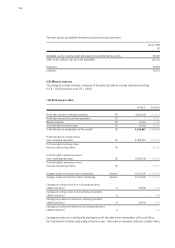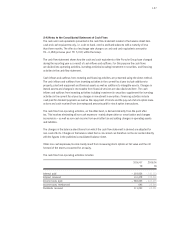Porsche 2006 Annual Report Download - page 139
Download and view the complete annual report
Please find page 139 of the 2006 Porsche annual report below. You can navigate through the pages in the report by either clicking on the pages listed below, or by using the keyword search tool below to find specific information within the annual report.137
Pension provisions
The provisions for pensions and similar obligations are determined using the projected unit credit method.
This method considers not only the pensions and future claims known on the balance sheet date but also
future anticipated increases in salaries and pensions. If pension obligations are reinsured using plan assets
they are disclosed on a net basis.
The calculation is based on actuarial assumptions about biometric data. The company uses the corridor
rule to measure the pension commitments and determine the pension expenses. Actuarial gains and
losses are not taken into account provided they do not exceed ten percent of the commitment or ten
percent of the fair value of the existing plan assets. The amount in excess of the corridor is distributed
over the average residual service period of the active workforce and recorded in profit or loss.
Past service cost is recognized on a straight-line basis over the average period until the benefits become
vested. If the benefits are already vested immediately following the introduction of, or changes to, a
pension plan, past service cost is recognized immediately in profit or loss.
Service cost is disclosed in personnel expenses while the interest portion of the addition to the provision
and income from plan assets is recorded in the financial result. The interest rate used to discount pro-
visions is determined on the basis of the return on long-term high-quality corporate bonds on the balance
sheet date.
Other provisions
Other provisions are set up if there is a current legal or constructive obligation to third parties which is
expected to lead to a future outflow of resources that can be estimated reliably.
Provisions for warranty claims are set up taking account of the past or estimated future claims pattern.
Non-current provisions are stated at their settlement amount discounted to balance sheet date. The
interest rate used is a pre-tax rate that reflects current market assessments of the time value of money
and the risks specific to the liability. The interest expense resulting from the write-up is recognized in
financial expenses.
Income and expenses
Income is generally recognized to the extent that it is probable that the economic benefits will flow
to the Group and the income can be reliably measured.
Income from the sale of products is generally not recognized until the point in time when the significant
opportunities and risks associated with ownership of the goods and products being sold is transferred
to the buyer. Income is reported net of discounts, customer bonuses and rebates.
In the case of long-term construction costs income is recognized in accordance with the degree of
completion. Interest income is recognized as interest accrues.
Dividend income is recognized when the Group’s right to receive the payment is established.
Production-related expenses are recognized upon delivery or utilization of the service, while all other
expenses are recognized as an expense as incurred. The same applies for non-capitalizable development
costs. Provisions for warranty claims are recognized at the time of sale of the products. Interest and other
borrowing costs are recorded as an expense in the same period. Interest expenses incurred for financial
services are disclosed under cost of materials.


